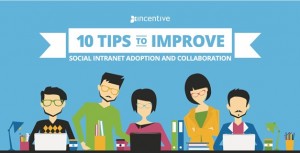What’s the ROI of three WordCamps?
Two WordPress Sites.
(Thank you, thank you very much. I’ll be here all week.)
You know that not all geeks are created equal, right? A social media geek isn’t necessarily an A/V geek or a hardware geek or a graphic artist geek. I think I blogged about that before.
It’s funny now that the PTSD has subsided. Seriously. I have just survived the most difficult 20 days of my life. Here are my thoughts — a debrief of sorts, from a social media geek’s perspective.
Why WordCamp?

I went to WordCamp Orange County in 2013 because my friend Pam Aungst suggested it. My blogging buddy and BFF Carol Stephen bought tickets, too. Pam’s plans changed. We still went.
Dot com versus Dot Org
(WordPress.com v WordPress.org)
I’ve been blogging on WordPress.com for longer than I can remember. In 2010, I started the Riggins blog on dot com. My blog was there from 2011 until last week.
WordPress.com is free.
You choose a username which becomes your website address (url). Since mine was YouTooCanBeAGuru, the address (url) was youtoocanbeaguru.wordpress.com. It’s here now, so don’t go there.
WordPress.org is also free.
It’s an open source data base. Again, this is my lay person’s understanding. I may be corrected. Please correct me.
Both sites have free or paid themes to choose from. Dot com does all of the updates automatically. Both options allow you to choose a mobile-responsive or mobile-friendly theme. This is even more important because of the penalty Google is implementing today.
When you use dot org, you need to buy hosting and you have to be more active in updating your site. But the benefit is ownership. You own the domain. You own the content.
If geeky stuff inhibits you, then just start writing. Hire someone to help you with the website part. Blogging is super important as part of a content strategy.
Desktop Server by ServerPress
So this year I went to WordCamp San Diego to meet in person and to hear Heather Steele of Blue Steele Solutions speak.
WordCamp San Diego was awesome (my third WordCamp). It was really fun running into people I knew and meeting others.

Frank Gomez, Me, Heather Steele, Carol Stephen, Adam Fout. at WordCamp San Diego 2015.
But I digress.
After Heather spoke, but before another class I wanted to attend, was “Installing WordPress Remotely and Locally by Stephen Carnam.” I had no idea what that even meant.
As the teacher started speaking I realized what I had fallen into. DesktopServer would let me try building a site on my computer (that is what they meant by “locally”) without paying for hosting first.
I kept saying to Carol, this is what I’ve needed all this time.
For serious @DesktopServer may be the answer to my WordPress prayers. It looks like a good way to try it. #wcsd15
— Bridget Willard (@YouTooCanBeGuru) March 28, 2015
And so, on April 1, I downloaded it. In two days (14 hours) I had both imported the Riggins blog and copy/pasted the pages from the static site.
It was beautiful. But I had trouble.
1. I didn’t realize you couldn’t upload (deploy the site) from the free version. I bought the regular one.
2. I didn’t realize you needed a live (DNS servers pointed to website address) host.
3. Desktop Server has the best support ever. They heard my cry for help (saw my shoot me now tweets) and began emailing support.
4. They even had an “assisted deploy” option because I bought the full version. Best $ 99 I ever spent in my life.
5. April 8, my site was live. It never would have been without them.
Seriously, DesktopServer, gave me the courage to try. I never would have even tried to build a site or convince my boss to buy hosting elsewhere unless I had been successful building our site on my computer.
Did I mention how much I love @DesktopServer? Best class I went to at #WCSD15 because it motivated me to try. Plus, the tech support ROCKS!
— Riggins Construction (@RigginsConst) April 8, 2015
Domain Name and Hosting:
Why is this so complicated? Here’s my lay person’s understanding.
Domain Name:
The domain name (bridgetwillard.com) is like a corporation name. You pay an annual nominal fee to own it. Like a corporation, you can have your office anywhere.
Hosting:
Hosting is like your office. This is the space you pay for on the internet where your website will be stored. You’re paying a host for their computer (server) and customer service and maintenance, etc.
It’s good to get a referral. Hosting does matter for security and site maintenance. Well, this is what I hear. I am, by no means, a hardware or server geek. I barely blog.
The point is that you should see what your needs are and get a recommendation from someone you trust. For this site, I took advice from Oscar Gonzalez and am using SiteGround.
The complication:
For me, it was two-fold.
I bought my domain name from a different provider than the hosting (in both instances). The one was more complicated because email servers were not being changed and I didn’t have the password. Blah blah get the IT guy involved, etc.
Some hosts will move your stuff for you, I hear. Apparently, I like doing things the hard way. (What would I write about if I didn’t?)
The hosting company who says “just forward the email from your domain name vendor to us and we’ll do the rest” will make millions of dollars. Millions.
Themes:
For this blog, I was lucky. The theme I was using was also available in the WordPress repository (directory).
For Riggins, I found a theme I loved. But it was funky on my phone even though it was supposed to be responsive. After falling in love, it took about three days to find an alternate.
I feel like I wouldn’t be honest if I didn’t say what a time sucking black hole it is to find a theme you like. I didn’t want our website to look like a blog. I finally settled on the one you see in the tweet below. One day, I may change it. But for now, it’s staying. I have a day job, you know.
It’s not great but it’s done. #MobileFriendly #BlackHole pic.twitter.com/TQvRaW3pKF
— Riggins Construction (@RigginsConst) April 10, 2015
Not being a graphic artist and DIY-ing this whole thing was another layer of frustration.
Sure, it’s easy to switch themes (I didn’t take this class but check out the slides). However, in a WordPress (hosted) site, you have to find the theme, then install it. After it’s installed you can do a live preview.
However, the live preview doesn’t show everything. So you have to activate it. Every theme has different header dimensions, too, just to add to the fun. Is my sarcasm showing?
If I had found a better theme while I was messing about in DesktopServer, I wouldn’t have gone through this frustration.
The web designers whose prices seem high probably take this into account. I say it’s worth it.
Plugins:
So the structure (functionality and design) of your site is controlled by the theme. But sometimes you need more functionality. Those come in the form of a plugin.
Think of it this way:
You bought a set of pots and pans from Costco. It comes with a few different sized pans and pots with lids, of course. But it doesn’t come with a springform pan you need to make a cheesecake or the special whisk you need to beat the eggs for your prize-winning soufflé.
The advice I got from WordCamp is to search the WordPress repository (directory) of highly rated and highly downloaded plugins that have been updated recently. This is especially important if you don’t know what you’re doing (me). Seriously, what I got out of my first WordCamp is “your site will crash.” It’s no joke.
I downloaded plugins for Google Analytics, XML Sitemaps, Social Sharing, Photo Galleries, and other miscellaneous functions. I check every day for updates and I run the updates.
The Results:
 I’m happy to say that rigginsconst.com was completed 4/8/15 and received the “mobile-friendly” blessing from Google on 4/10/15.
I’m happy to say that rigginsconst.com was completed 4/8/15 and received the “mobile-friendly” blessing from Google on 4/10/15.
This site is also (but was before) mobile-friendly.
The perils of just doing stuff:
My content strategy was backwards. Sure, free is better. In the long run, though, it seems easier to start from scratch on your own domain with a blank slate.
Instead, I merged a site I built in CSS with a blog for Riggins. This took a week to build and fix.
For this site I just imported the blog. I say “just” but in comparison it was easy.
The downfall with both sites was fixing all of my links back and forth within my own blog posts.
Everything I ever did for rigginsconst.com or rigginsconst.wordpress.com before 4/8/15 was broken. The link structure with a WordPress blog is totally different. I knew I’d break it but in the long run it will be worth it.
Of course for the Guru blog it moved from youtoocanbeaguru.wordpress.com to bridgetwillard.com. I broke all of those links, too.
My Re-Sharing Strategy
I knew since I broke my links, I’d have to re-share the posts that I deem most important.
I first share them on Google Plus. They are, after all, Google. I think it helps the ranking.
“If there’s anything close to a short-cut, it’s Google Plus.” Pam Aungst
I’m cycling through about ten posts on each site, making sure the featured image is set, and sharing on my social platforms. Not in a spammy way, mind you, just sharing. One post a day, once a day.
My Advice:
If you’ve been on my path, perhaps this post lets you know that you are not alone.
If you haven’t started yet, spend the $ 150 to buy your name and hosting – on the same site if possible.
If you can hire a professional, do it. They won’t be frustrated and you can just write.
(234)
Report Post






